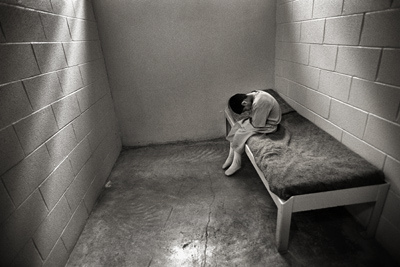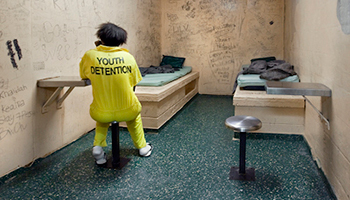This week was International Youth Day, so we thought we would open up a discussion about youth in prison – or actually the problem of youth in prison.
Through the juvenile courts and the adult justice system, the US incarcerates more youth than any other country in the world. This is a reflection of the larger trends in incarceration practices in the US. It is estimated that more than half a million youth are brought to detention centers every year.
Photo courtesy: http://higherground.me/the-need/
Activists from various organizations dedicated to ending youth incarceration believe that the best way to mitigate the impact of detention and incarceration on youth is to actually reduce the number of youth that pass through the system, by providing credible alternatives to incarceration, such as treatment, rather than punishment.
As documented in the Annie E. Casey Foundation publication, No Place for Kids: The Case for Reducing Juvenile Incarceration, these out-of-home placements often have a deeply troubling track record: high rates of recidivism; exorbitant costs; frequent harm to the health and safety of the youth (and staff) who are confined in them; and poor outcomes in terms of youth development.
One of the leading actors in the fight to end youth incarceration is the Juvenile Detention Alternatives Initiative (JDAI); since 1992, the JDAI, a project of the Annie E. Casey Foundation, has demonstrated that jurisdictions can safely reduce reliance on secure confinement and generally strengthen their juvenile justice systems through a series of interrelated reform strategies. JDAI is now being replicated in almost 200 jurisdictions in 39 states and the District of Columbia.
Their approach is multi-faceted, including multiple emphases on: inter-governmental collaboration; reliance on data; creation and implementation of objective admissions screening for detention facilities; expedited case processing to reduce pretrial detention; improved handling of “special cases”; express strategies to reduce racial disparities; improving the conditions of confinement; and researching, testing, and endorsing alternatives to confinement.
Alternatives to confinement are sensitive to family and culture, and treatment is often built around the strengths of the youth and their families.
The JDAI has produced some promising results from their programs. Detention center populations fell by between 14% and 88% in JDAI counties over the course of 7 years (1996-2003). These same counties saw declines in juvenile arrests (an indicator of overall juvenile crime rates) during the same time period ranging from 37-54%.
Photo courtesy: http://www.aecf.org/m/siteimg/ourwork-initiative-jdai.jpg
For example, in Santa Cruz, CA, through the JDAI project the detention population was reduced, as well as juvenile crime. Santa Cruz’s detention reform efforts resulted in saving the county millions of dollars by avoiding the construction and staffing of a new detention facility. Since implementing JDAI, the juvenile hall population has been reduced by more than half, averaging more than 50 youth per day in 1996 and just 21 in 2013. In addition, juvenile felony arrests are down 57 percent and misdemeanor arrests are down 70 percent. Santa Cruz uses an objective screening tool to only detain high-risk offenders and developed alternative programs and procedures for low and medium risk youth. Santa Cruz developed meaningful partnerships with community-based organizations to provide culturally responsive alternatives to detention, as well as programming from diversion to family preservation. The reduction of racial/ethnic disparities and disproportionate minority confinement has been an integral component of their detention reform work. As a result, Santa Cruz has significantly narrowed the gap between Latino youth representation in the general population and the detention population.
If you’re interested in reading more about this, and supporting the JDAI see: http://www.jdaihelpdesk.org/SitePages/about.aspx
Remember that keeping in touch with inmates – especially if they are children – is essential for their future; check out our provider page, to see who offers the best price for prison phone calls.
Do you want to contribute to this discussion? Send us your comments, or become a regular contributor about prison and prison phone related issues! Go to YOUR VOICE!








